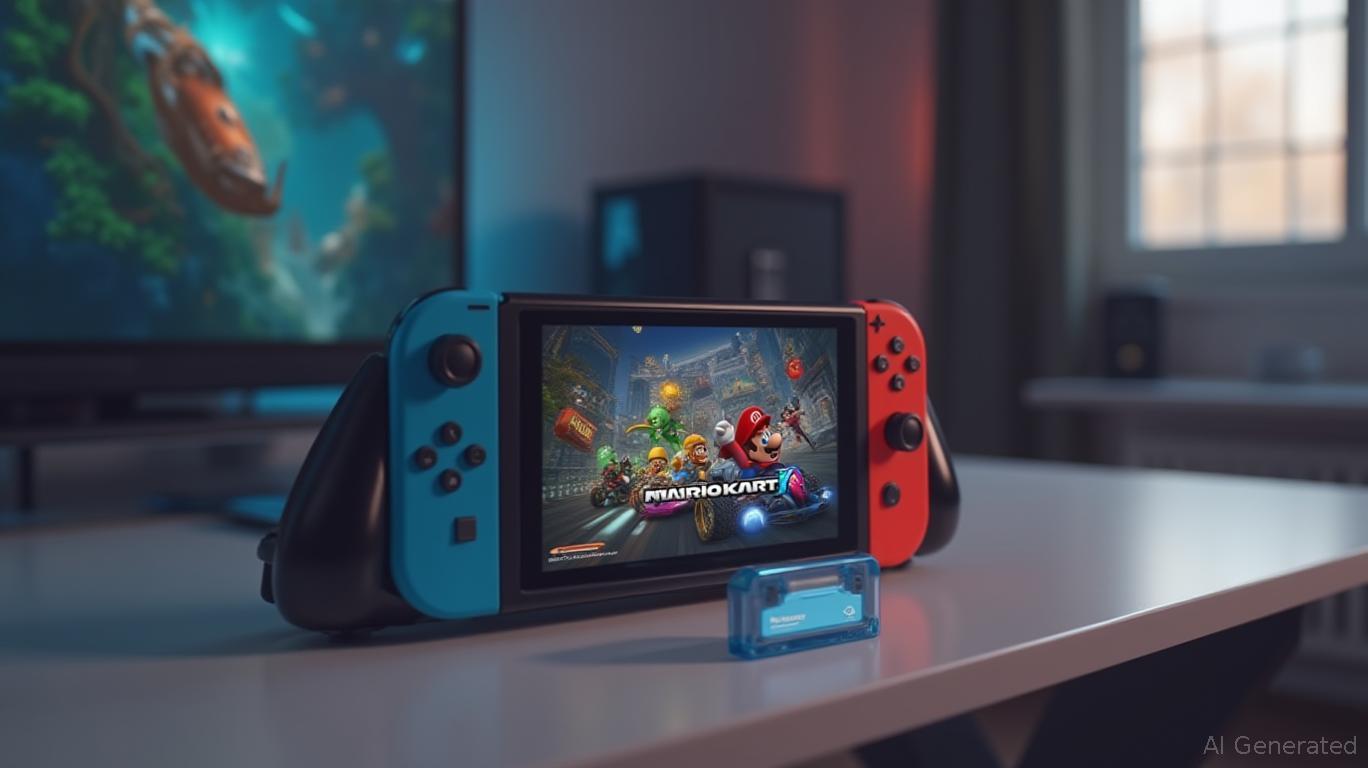Nintendo Switch 2: Navigating Demand and Supply to Secure Hybrid Dominance
The Nintendo Switch 2 has arrived at a pivotal moment for the gaming industry, blending premium hardware upgrades with the hybrid console's enduring appeal. As Nintendo bets on its next-gen device to sustain growth amid rising competition and macroeconomic headwinds, the console's success hinges on its ability to balance demand elasticity, pricing strategy, and software-hardware synergy. Here's how investors should assess its market potential and risks.

Demand Elasticity: A Premium Price, a Premium Audience
The Switch 2's $450 price tag represents a 10% increase over its predecessor but aligns with its upgraded specs: a 1080p display, 256GB internal storage, and enhanced motion controls. Initial pre-order data signals robust demand, with 2.2 million applications in Japan alone for a console expected to ship just 2.2 million units globally in its first fiscal year. This suggests a highly inelastic demand curve among Nintendo's core audience—hardcore gamers willing to pay a premium for exclusives like Mario Kart World and backward compatibility with 118+ Switch titles.
However, reveals investor confidence: shares have surged nearly 30% in 2025, reflecting optimism about sustained demand. Yet, the risk of price sensitivity remains for casual buyers, particularly in regions like the U.S., where retailers like Walmart and Best Buy faced immediate sell-outs. Nintendo's strategy to prioritize “active gamers” through eligibility-based pre-orders—requiring Nintendo Switch Online memberships or prior game purchases—aims to combat scalpers while ensuring the console reaches its core audience first.
Pricing Strategy: Tariffs, Trade-offs, and Trade Secrets
The Switch 2's price is a delicate balancing act. Manufacturing in Vietnam avoids U.S. tariffs, but a looming July 2025 deadline threatens to reintroduce duties. If unresolved, the $450 price could rise by up to 10%, testing demand among budget-conscious buyers. Nintendo's response—delaying the launch until 2025 to secure production scale—suggests it prioritizes long-term supply stability over short-term margins.
Meanwhile, the console's bundled pricing ($499.99 for Mario Kart World) adds value without pushing the price beyond the $500 threshold that defines premium gaming hardware. This dual pricing strategy caters to both core gamers (who buy the base model) and families (drawn to bundled content). The risk? Competitors like Sony (SONY) or Microsoft (MSFT) could undercut Switch 2 sales with lower-priced alternatives, but Nintendo's hybrid model—combining portable and home gaming—remains unique.
Supply Chain Dynamics: Lessons from History
Nintendo's history of supply chain missteps, most notably the 2017 Switch shortage, looms large. This time, the company has delayed production until 2025, with mass manufacturing starting in late 2024. The goal: 15 million units by March 2026, surpassing the original Switch's first-year sales. Yet, inventory constraints persist: retailers like Target sold out within hours, and Japan's lottery system hints at shortages lasting months.
Nintendo's solution? Focus on repeatable software revenue. The Switch 2's 256GB storage and backward compatibility ensure existing Switch owners can migrate seamlessly, while new buyers are drawn to first-party franchises like The Legend of Zelda or Animal Crossing. shows this strategy's success: software now accounts for over 40% of Nintendo's profits, a trend the Switch 2 aims to amplify.
Software-Hardware Synergy: The Ecosystem Play
Nintendo's true edge lies in its ecosystem. The Switch 2's 256GB storage and improved performance are designed to retain users for years, leveraging a library of over 15,000 games (two-thirds compatible post-launch). First-party exclusives like Mario Kart World and upcoming titles like Ys: Proud Edition act as “moats” against competitors. More importantly, the Switch's installed base of 152 million units creates a network effect: new Switch 2 owners join a community primed for multiplayer and cross-play, while existing users upgrade to access enhanced features like 4K output.
Risks: Scalpers, Compatibility, and Third-Party Gaps
The Switch 2 isn't without vulnerabilities. Scalpers have already driven eBay prices to $500+, eroding margins and accessibility. Nintendo's eligibility checks help, but secondary market speculation could deter impulse buyers.
Hardware compatibility is another hurdle. Titles like Ring Fit Adventure require original Joy-Cons, fragmenting the ecosystem. Third-party support, while strong with games like Cyberpunk 2077 and Street Fighter 6, still lags AAA titles. Analysts note that 30% of third-party Switch games may face performance issues or delays, risking the console's appeal to broader audiences.
Investment Thesis: A Hybrid Bet Worth Taking
Despite these risks, Nintendo's Switch 2 is a compelling long-term play. Its hybrid model dominates a niche untapped by consoles focused on either home or mobile gaming. With a projected 100 million-unit lifecycle (per Ampere Analysis), the Switch 2's software-driven revenue model and loyal fanbase position it to weather macroeconomic volatility.
Investors should:
1. Monitor tariff developments: A July 2025 resolution could stabilize pricing and margins.
2. Track software releases: A strong 2026 lineup (e.g., The Legend of Zelda: Tears of the Kingdom 2) will sustain demand.
3. Watch inventory management: Sustained restocks post-launch will determine whether shortages become chronic.
suggest Nintendo is aiming for 15 million units in 2025—30% above the original's pace. If achieved, this could push NTDOY to all-time highs.
Conclusion
Nintendo's Switch 2 isn't just a console; it's a strategic pivot to capitalize on its ecosystem's strengths. While risks like tariffs and third-party gaps linger, the hybrid model's enduring appeal and the company's focus on first-party exclusives make this a buy for investors willing to bet on Nintendo's ability to navigate demand and supply with precision. For now, the Switch 2's launch is a win—both for Nintendo and the gamers who have waited for it.

Comments
No comments yet